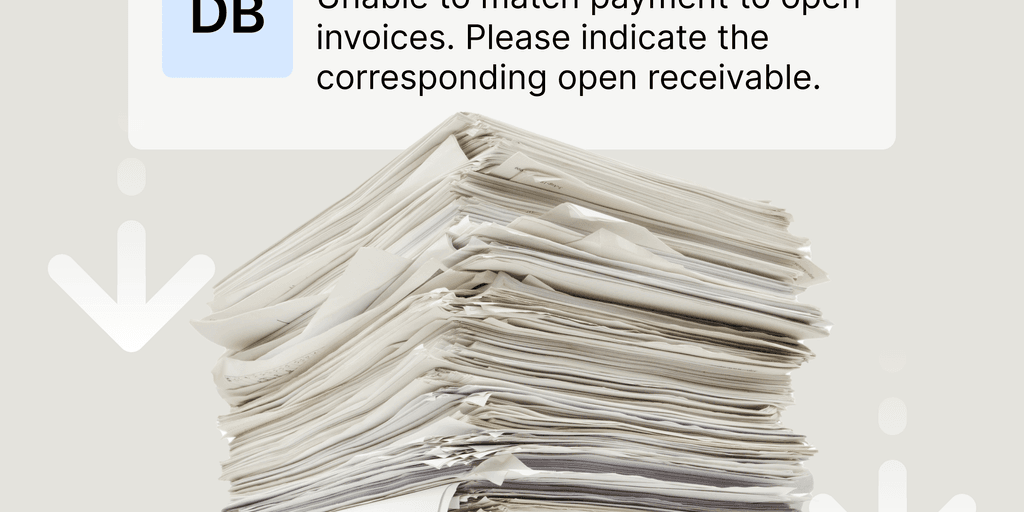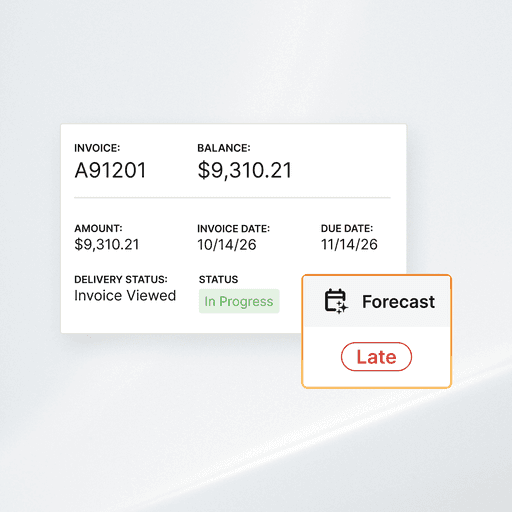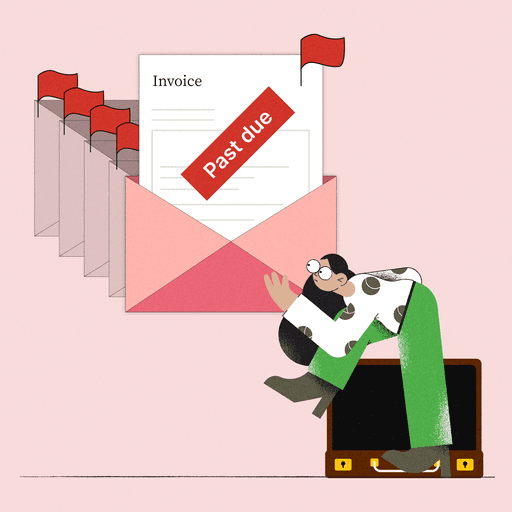
How To Make More Effective Collection Calls
- 7 min read
In this blog, you’ll learn:
How to prepare for and make successful collection calls
At what point you should write off bad debt
How to streamline your collections efforts with collaborative AR software

Pursuing accounts receivable collections is no one’s idea of a good time. And when this process involves manually following up with each account over the phone, it’s not only cumbersome but inefficient.
For those looking to ease the pain of the collection process, there’s good news: professionals tasked with AR collections can largely skip the need for collection calls altogether—and streamline the collection process—thanks to intelligent collections software.
But, if you don’t yet have that technology in place, knowing how to approach collection calling to increase your chances of success will put your mind at ease as you dial.
How to prepare for a collection call
Collection calls should be an escalation of an ongoing collections process—you should let your customer know about their debt well before you proceed to calling. The first step is to remind the customer of the payment due a few times via invoices or bills.
When the payment is 30 or 60 days past due, you should notify the customer about your debt collection efforts in writing using a dunning letter. The letter should lay out exactly what you are looking to collect from the customer and why, including all the specific information about the unpaid bill.
It’s best not to take a strident tone, especially at first, though you may end up sending multiple dunning letters with increasingly firm language. If the letters you sent receive no response, you will likely want to try another strategy—namely the collections call—before deciding to write off the debt.
Before calling the customer, make sure you have all the important documentation and information at your fingertips. These details include:
The customer’s name and contact information
The amount the customer owes and the breakdown of the elements of the debt, such as late fees
The date the customer incurred the debt and the dates of previous communications
An invoice, statement, or other documentation to support your claims about the debt
The more detailed information you have, the stronger your position in inducing your customer to pay. You’ll also be in a much better position to provide the customer on the other end of the line a positive experience as you work with them to handle the debt. Ensure that you’re well-informed and organized before picking up the phone.
Collection call tips
Consider your strategy and adopt the following collection call techniques once you are ready to contact your customer by phone. These collection call tips will help ensure that your calls have the best chance of success—of vital importance given that on average 50% of B2B invoices in the US are paid late, and 8% are written off.
1. Have your facts in front of you
Have all of the pertinent information on a print-out or pulled up on your screen in front of you before you make the call. The customer is likely to have questions about the facts, and they’ll be more likely to believe your claim if you can confidently assert the details without hesitation. If you are missing key facts and end up having to call the customer back, you’re inadvertently giving them an extension. And, you’ll have to restart the negotiation from scratch during the next call.
2. Strike the right tone
The goal of a collections call is not to antagonize or strong-arm the debtor but to straightforwardly inform them about the facts of the situation and request their cooperation. This means your tone should be friendly but firm, especially during the initial call. You may find the need to get more assertive in subsequent calls, but you should never be threatening, show anger or other emotion, insult the customer, or use a sarcastic or belittling approach.
3. Validate the customer
Contradicting the customer’s beliefs or facts is a surefire way to start the conversation out on the wrong foot. A better approach is validating what they are saying with phrases like, “I can understand why you feel that way,” and “I can see how that could happen.” When hearing these words, customers will feel heard instead of dismissed or defensive, which helps keep lines of communication open.
4. Use conversational strategies
There are a variety of methods you can use during the call to increase the likelihood of customers engaging with you and even participating actively in the conversation. One is to ask open-ended questions that prompt the customer to provide information or share their perspective. Another is to leave spaces of silence in the conversation, especially after asking a question, so the customer will feel compelled to speak. Finally, stay calm and focused: bring the customer back to the matter at hand whenever things get off track.
5. Plan how you’ll handle excuses
There are many common customer excuses you can anticipate hearing on your calls, which is good news because it means you can think of responses ahead of time. Common responses you might hear from customers during collection calls include:
I never got the bill
The check is in the mail
Someone else manages payments
We dispute the accuracy of this bill
Our payment terms are net 90 days
There’s a problem with my invoice
Go into your calls armed with phrases to respond to such comments, even having them written out in front of you if that helps you remember them. When the customer tries to end the call or get out of paying using one of these angles, you can keep the conversation going with well-thought-out and professional responses.
When do you write off bad debt?
There is no hard-and-fast rule about when to give up on the process of trying to collect the debt and write it off as bad debt. When you decide to do so will depend on the amount of and circumstances of the debt, what responses you’ve received from the debtor, and how diligently you’ve attempted to recover the money.
A rule of thumb is that if you’ve made a series of good-faith, escalating efforts to collect and have still not recovered the full amount, you should cut your losses by writing the debt off.
Keep in mind that writing off the debt requires documentation. Keep a file for each uncollectible receivable that includes the invoice in question, any documentation you’ve collected, and a record of all your collection attempts, including notes about phone calls.
How to streamline collection calls with accounts receivable automation software
If planning for and conducting collection calls seems like a task you’d rather avoid, you’re hardly alone.
Many companies choose to send their delinquent accounts to collections agencies that take care of this work for them. But others have found a more streamlined solution: AR automation.
With AR automation software, teams eliminate much of the burden of this work, drive major improvements to efficiency, and drastically improve their DSO.
In a platform like Versapay, your AR team can easily prioritize collections activities as the system automatically sends collection reminders on certain trigger dates, relieving your staff from having to manage this manually.
AR professionals can still control the process, however, as they’re able to set parameters about which accounts the system will pursue, and set controls based on the number of days an invoice is past due and the amount owed.
Systems that make it easier for your customers to pay—both online and using their preferred payment methods—can also go a long way to minimize late payments and reduce the burden on your collections team.
Versapay provides all these services, as well as one unique feature: an online collaboration function that makes it easier for companies to resolve disputes with late or non-paying customers.
Through Versapay’s cloud-based portal, your customers get real-time access to all their invoices, account information, and supporting documentation. This makes for an easier collections process as they’re never left in the dark about what they owe. Plus, your AR team has all the information they need to engage in collections activities right at their fingertips. Talk with an expert today to see how it works.
About the author

Katie Gustafson
Katherine Gustafson is a full-time freelance writer specializing in creating content related to tech, finance, business, environment, and other topics for companies and nonprofits such as Visa, PayPal, Intuit, World Wildlife Fund, and Khan Academy. Her work has appeared in Slate, HuffPo, TechCrunch, and other outlets, and she is the author of a book about innovation in sustainable food. She is also founder of White Paper Works, a firm dedicated to crafting high-quality, long-from content. Find her online and on LinkedIn.


